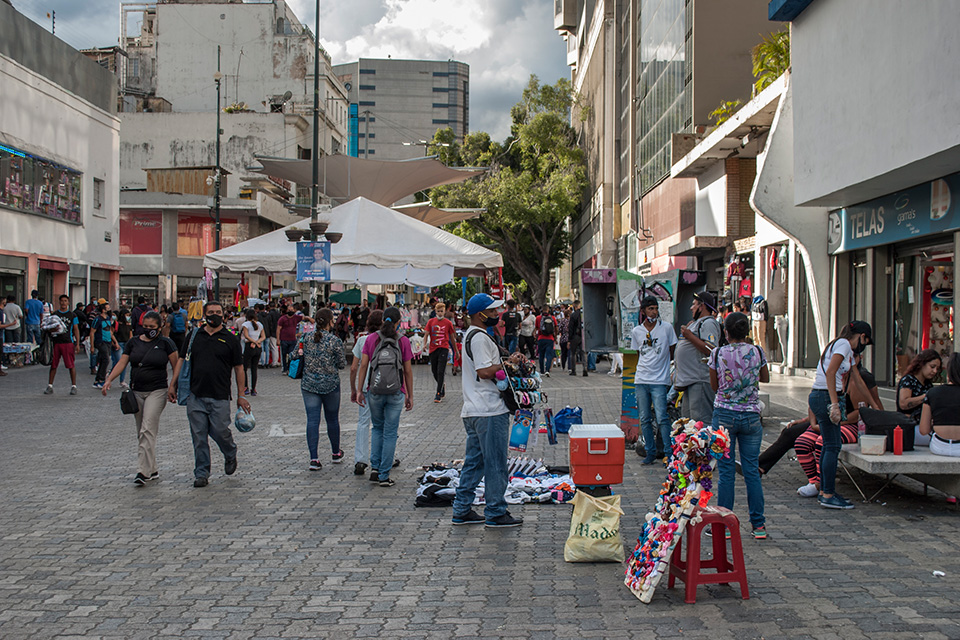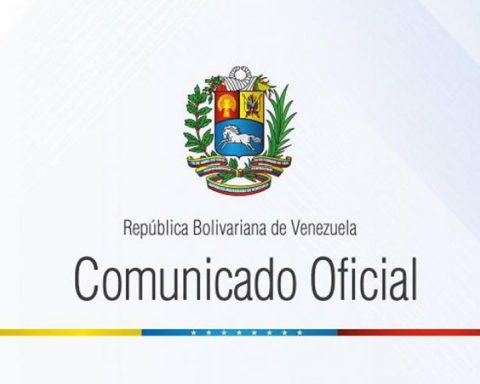The recovery of income and the economy offer support for the reduction of poverty; but a limit could be reached if other conditions do not accompany this stage, point out the UCAB researchers, coordinators of the Living Conditions Survey (Encovi), Luis Pedro España and Anitza Freitez
The Living Conditions Survey (Encovi) of 2022 was presented this Thursday, November 10, by the Institute of Economic and Social Research (IIES) of the Andrés Bello Catholic University (UCAB), with the main finding that the poverty decreased from 65.2% of the population in 2021 to 50.5% in 2022.
The study was presented on the UCAB campus by Luis Pedro Spainformer director of the Economic and Social Research Institutions (IIES-UCAB), and Anitza Freitez, geographer, expert in population studies and coordinator of Encovi.
According to Luis Pedro España, the figures suggest that Venezuela returned to existing poverty levels in 2018, largely explained by the economic rebound that the country has experienced in the last two years and, especially, the recovery of income in the labor sector.
«For the first time in seven years (since 2014) poverty is reduced in the country. 50% of households are not poor; which means a reduction of almost 15 percentage points compared to 2021. However, Although the economy improves, it does not improve the situation of families, ”explains the study.
*Read also The severity of poverty in the country peaked, impacting 94.5% of the population
The recovery of income and the economy offer support for the reduction of poverty, but it could reach a limit if other conditions do not accompany this stage, point out the researchers of the Living Conditions Survey (Encovi)
Income begins to lose weight as the cause of multidimensional poverty, but other social factors do not keep pace with economic growth, such as access to housing, education and services.
“Public policies are needed. As long as that does not happen, we are going to reach a valley in which poverty will not continue to recover solely due to economic growth, “explained Spain.
In the same way, Luis Pedro España argued that at this time poverty has more to do with social and infrastructure factors (housing, education and services); although the economic ones continue to predominate.
The gaps widen
The decrease in poverty in a context of economic growth presents nuances that are not so positive, since there is also an increase in inequality to the point that, by 2022 Venezuela is emerging as the most unequal country in the world.
The surveys made it possible to segment the average income of Venezuelans into ten deciles that group together ten groups based on their remuneration. It was found that the wealthiest 10% of the population earn 70 times more than the poorest 10% of Venezuelans.
The average income of the wealthiest decile is $553.2 per month and Spain shows that even at this level, there are important differences that dissipate when averaging the salary of the entire group. This 10% generates earnings much higher than the preceding decile, since the second tier of the wealthiest averages just $169.1 per month. In contrast, the first decile, the poorest, registers an amount of just $7.9 per month.
But inequalities are not only marked by the disparate monthly income margins, but also by region, gender and skin color.
Almost 40% of the households with the highest income are in Caracas, despite the fact that only 16% of the country’s families are concentrated in this city. The economic activity that agglomerates the capital gives it greater stability than in the interior. The more rural the city, the worse the living conditions tend to be.
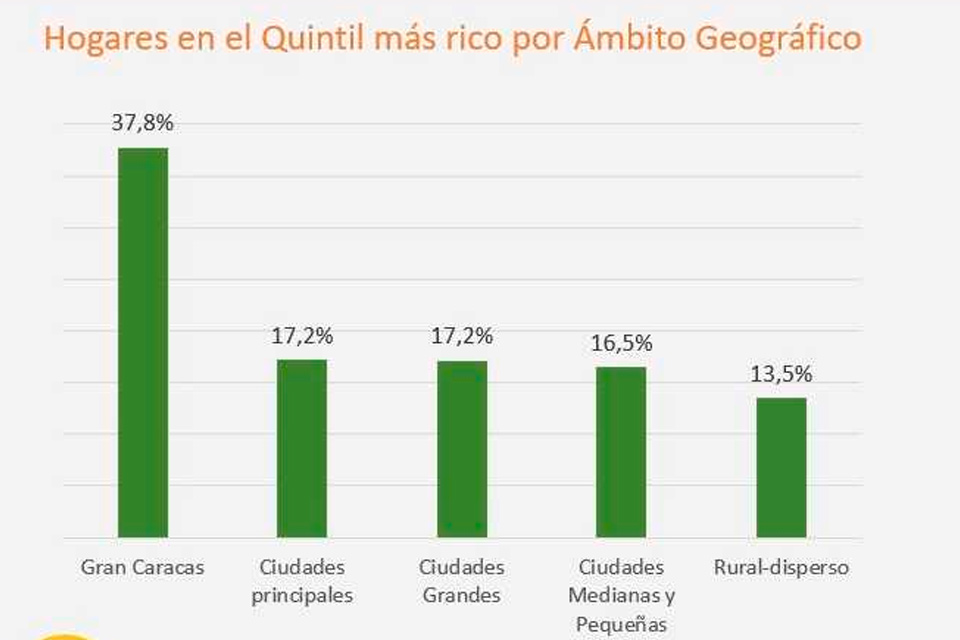
This year’s Encovi found a peculiar trend in the division of income by gender, since the results indicate that men earn, on average, 11% less than women. However, when dissecting the data, very favorable differences are found for men in managerial positions.
The average salary of men in important positions, such as company directors, is $16.85 per hour, while those of women in the same position reach just $5.67 per hour, barely a third of what men earn. mens.
According to Spain, the difference in favor of women is found in less important positions and non-professional jobs, but when it comes to important positions, men prevail, possibly due to their availability of time to work.
Finally, for the first time Encovi studied access to opportunities and income generation according to skin color. The study found that the gaps are not abysmal, but that white-skinned people have more access to study and better income. 50.3% of the white population declares itself as “not poor”, in contrast to 44.1% who consider themselves mestizo and 43.9% who define themselves as black.
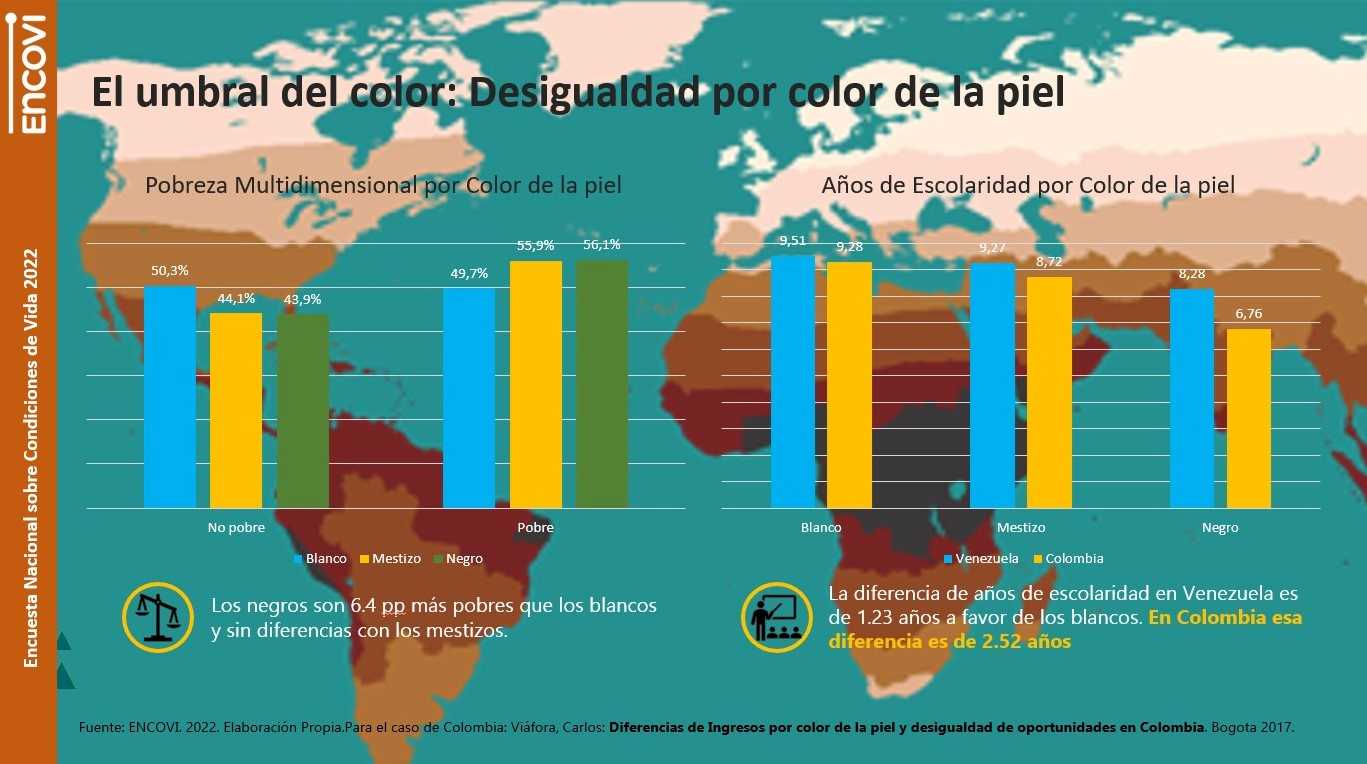
education in the doldrums
In the midst of various indicators recovering, Encovi’s greatest negative had to do with education, since even with the return to attendance after two school periods under the distance education modality, educational coverage was reduced.
The educational coverage rate fell from 65% in the 2020-21 school year to 63% in 2021-22. “We returned to face-to-face classes, but with fewer students”, highlighted Anitza Freites, professor of the IIES-UCAB research team.
This translates into 550,000 fewer enrollments than in the previous school year, a number that increases the number of out-of-school children to 1.5 million.
*Read also Secel Report: Students do not have the necessary knowledge of mathematics and Spanish
The school dropout was a constant among young people between 12 and 17 years old. The most common reason no longer responds to economic factors such as the cost of supplies or the need to join the labor market. Instead, now 35% of men and 16% of women of this age drop out of school because they “don’t want to or don’t think it’s important.”
Freitez reasons that this is due to the fact that an outdated educational offer is maintained, with concepts that were applied decades ago, while in the rest of the world education evolves and finds new learning formulas, which also contribute to the economy of the countries by train talents to join technical areas.
“We remain anchored to an educational offer from the last century. Training offers at a technical level are absent within the educational offer », he reasoned.
Although the general conditions of education worsened, there was a slight upturn in the number of students enrolled in private institutions of secondary education and higher university enrollment.
“We continue without observing a policy from the Ministry of Education to reduce school dropouts,” Freitez said.
*Read also Absence of official data does not allow to determine how much is the school desertion
On the other hand, the study collects data from the School Feeding Program (PAE), which in this edition registered an upturn related to the return to face-to-face classes.
Some 4.2 million students benefit from this state program. The problem is the frequency in which it is granted, since only 42% of the school population is fed by the PAE every day.
Migration without return
The IIES-UCAB researchers reason that the migrant population shows no sign of returning en masse to Venezuela at any point in the near future, considering that not even the labor crisis unleashed in the receiving countries thanks to the covid-19 quarantines led to the return.
The COVID-19 return trend was tiny and short-lived. In addition, it preceded an increase in departures that would occur later due to the lifting of mobility restrictions between countries.
The data indicates that only 6% of the population that migrated has returned to the country. This represents just over 360,000 of the more than 6.1 million who had left the country as of May 2022, the date on which the data for Encovi was collected.
Now the magnitude of the diaspora is even greater. According to statistics from the Interagency Coordination Platform for Refugees and Migrants from Venezuela (R4V), there are already more than 7 million Venezuelans who have sought new borders.
However, the researchers warn that the figures could be flawed, since the receiving countries hardly take circular migration accurately, that which occurs when the same Venezuelan emigrates again from his receiving country to another destination.
Freitez criticizes the Government for these statistical inaccuracies, since they keep a record of departures, but do not publish the data.
“Quantifying migration remains a problem. Figures are not published even though we know that these statistics are kept. We do not have internal data », he recalled.
Far from determining the number of migrants, Encovi focused on exploring the motivations for leaving the country and the conditions of this population in the receiving countries.
The first finding is in agreement with other discoveries in this edition: the economic factor loses preponderance. Although it remains the main reason for migrating, now other elements are gaining space in those percentages.
Between 2019 and 2020, work was the main motivation to migrate in 84% of cases. This percentage was reduced to 75% by 2022, while family reunification rose from 7% in 2020 to 10% in 2022. 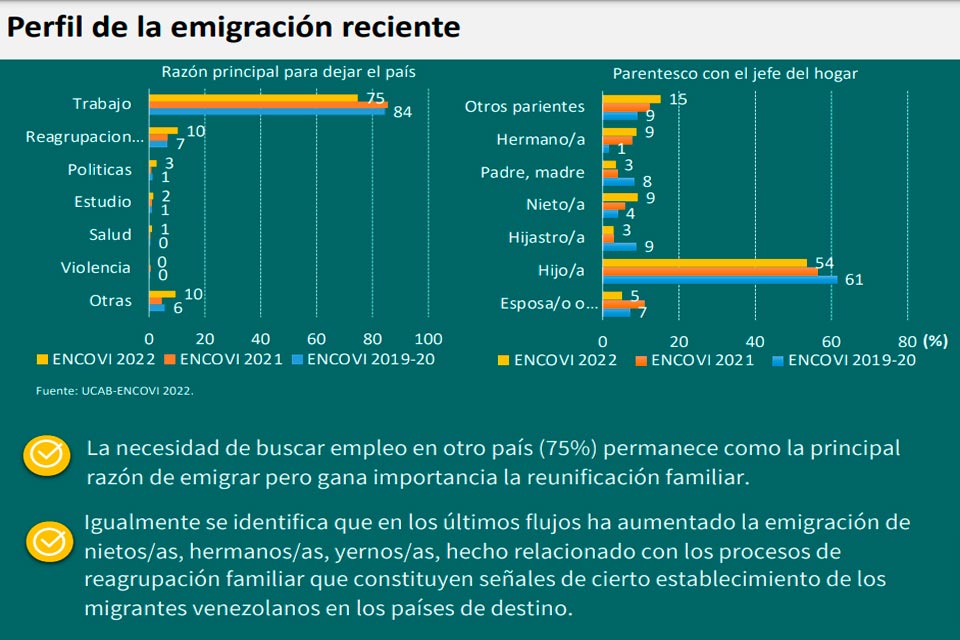
When evaluating that 10% who answered “family reunification”, it is evident that families are beginning to be completed. In years past, the most important kinship was children, stepchildren, fathers and mothers. Now the item “other relatives” has gained much more relevance, since less direct relatives such as uncles, cousins and similar people begin to meet.
This new migration in recent years presents different characteristics with respect to that registered in previous years. As the flow increases, the level of professionalization is reduced. The proportion of migrants with a secondary education level grew.
*Also read: The “Venezuelan invasion” in North America is necessary for the US economy
While in 2017 the professional population accounted for 40% of the migrating population, 12% were intermediate technicians, 32% completed secondary education and only 8% arrived in another country with an initial level of education; five years later the distribution changes to 22% professionals, 8% TSU, 49% high school graduates and 21% with primary school or less.
Similarly, the geographical distribution has changed. In 2017, 33% of migrants left Caracas and 21% from rural areas. Now the roles have been reversed and while only 12% emigrate from Caracas, 33% do so from rural locations.
Freitez reasons that this phenomenon is related to the lack of opportunities characteristic of rural areas. The people of Caracas, with more facilities, left the country first and served as a platform for the rural population to follow in their footsteps years later.
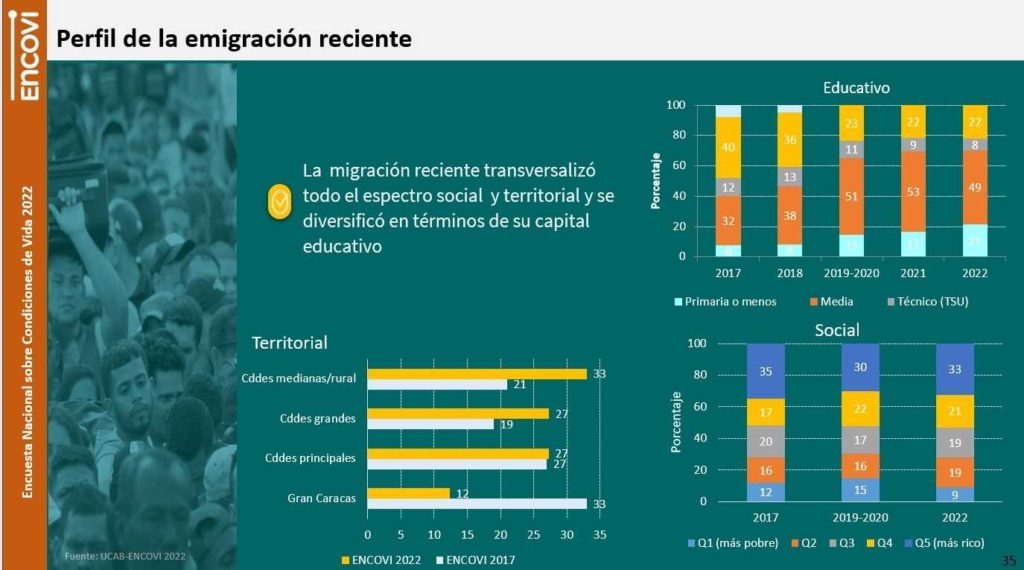
Finally, there is a change in the nature of remittances, an element that has characterized the Venezuelan economy in recent years. Now 51% of migrants do not send remittances to their relatives in Venezuela. The remaining 49% does so with lower frequencies than before.
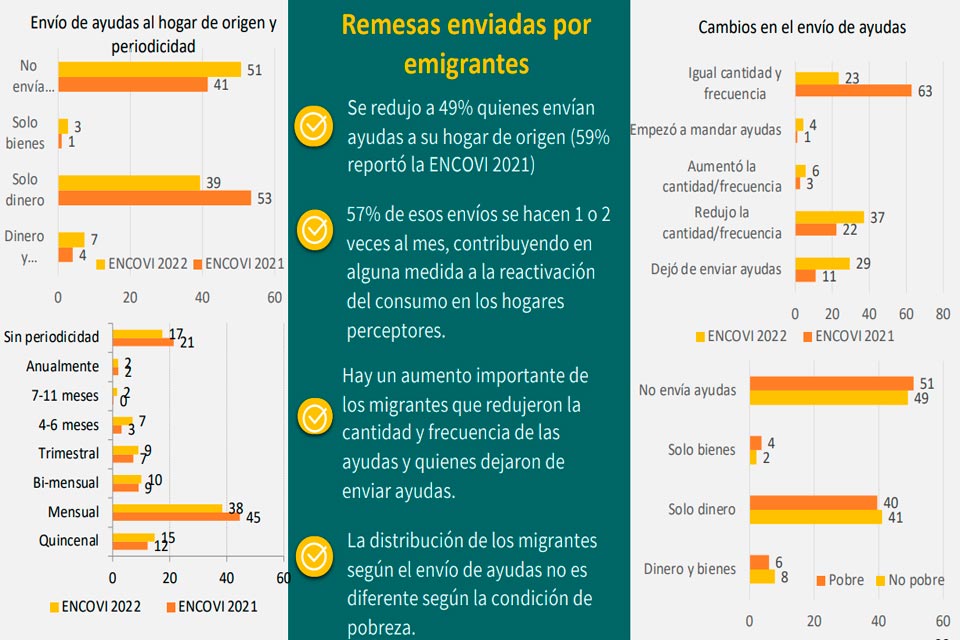
Post Views: 1,360
